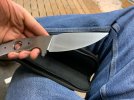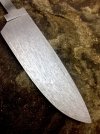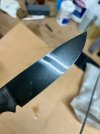t1mpani
Platinum Member
- Joined
- Jun 6, 2002
- Messages
- 5,527
With stainless steels, the Peters’s guys say to go ahead down to 0.015”
If I remember correctly, 0.018” is the micrometer setting that didn’t bind on this one. I know they do some straightening if necessary, but I’ve never received a crooked edge.
If I remember correctly, 0.018” is the micrometer setting that didn’t bind on this one. I know they do some straightening if necessary, but I’ve never received a crooked edge.
Last edited:




